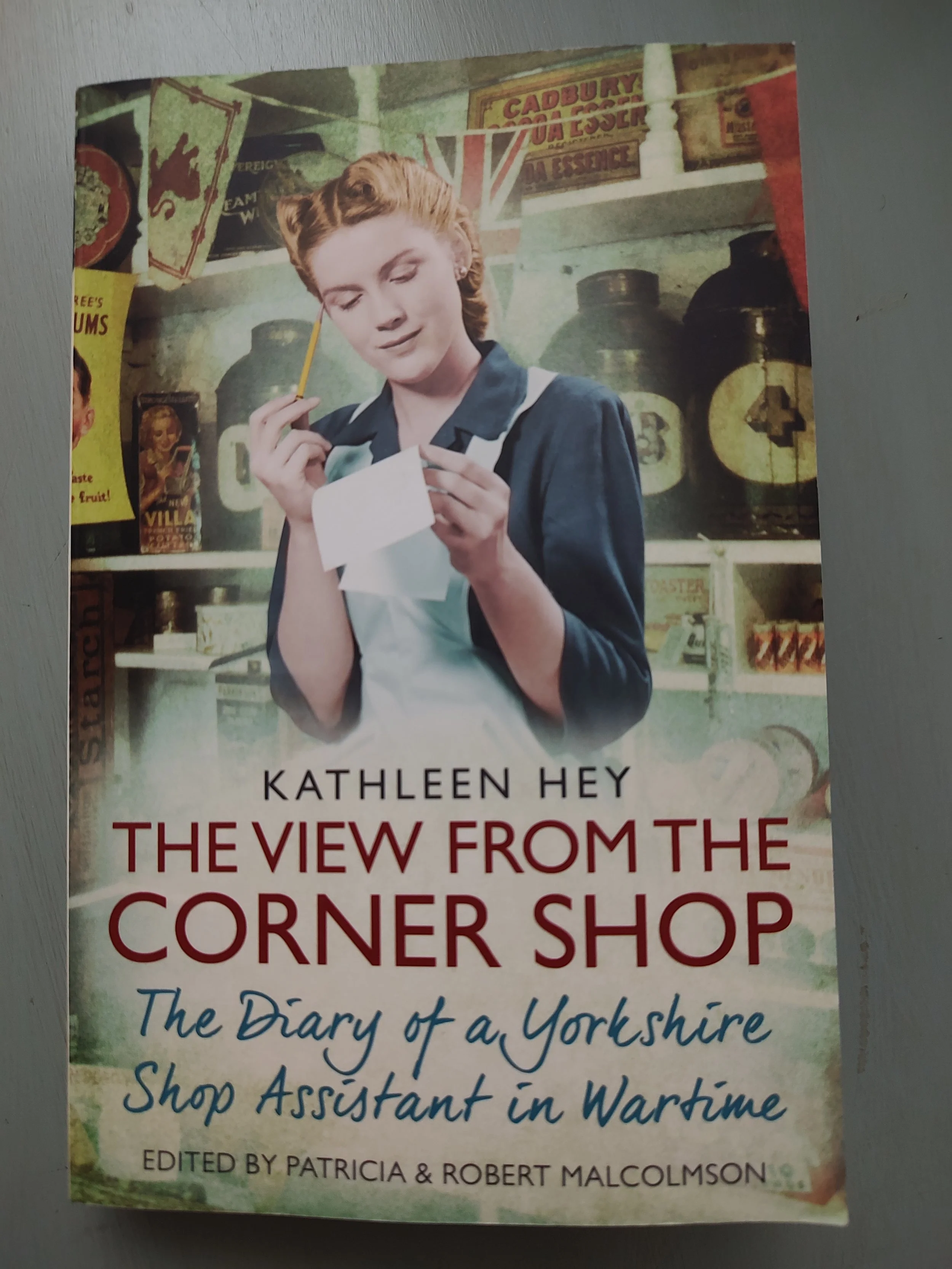Wartime Cafes
JUMP TO RECIPE
Rationing during World War II was a mixed blessing. On one hand, it ensured all citizens had a chance to purchase enough food, and the right variety of foods, to remain healthy. Thanks to price controls on non-rationed goods, some people ate better than they had been able to before the war. But it was an imperfect system that some took advantage of. I recently learned more about this from a lovely book that presents the diary of a young woman who helped run her family’s food shop during the war.
Mass Observation Diaries
Kathleen Hey’s diary was part of a special collection gathered around the years of World War II by Mass Observation, a social anthropology organization that collects first-hand accounts of people’s lives. One of the most well known from the World War II era is Nella Last’s diary. Kathleen’s days revolved more around her workplace and I found one of her comments about wartime cafes intriguing. In July 1941 she wrote, “Brooke Bond’s [a major tea brand] man says he has a friend in London with a wife and one child working who get all their meals in cafes during the week and only have to make their rations spin out for the weekend. He says the friend was quite indignant when Brooke Bond’s remonstrated with him and said they could not manage otherwise. Brooke Bond’s says there is something wrong with a system that allows a clerical worker to do this and manual workers going short.”
Wartime Cafe Meals
In Britain, cafes were a godsend for workers who had very little time or energy left for food shopping or preparing meals. Factory workers and other manual laborers could get a plain but decent, filling meal at a fair price. The meals typically included a soup, a main dish with vegetables, and a pudding (dessert) with tea. Kathleen’s diary makes it clear that some people might have taken advantage of these cafes but they were a welcome comfort to many thousands of workers.
I decided to create my own World War II-style cafe menu with a first course of vegetable soup, a main course of hamburger steak with gravy and green peas, along with a twice-baked potato, and an American-style pudding: Old-Fashioned Indian Fruit Pudding. This pudding is perfect for autumn because of its hearty molasses flavor with apple and ginger.
Because another wartime soup shortcut was “made from a dehydrated soup mixture” I decided to take a modern-day shortcut—I added a small bag of frozen mixed vegetables to some vegetable broth; added a cup of tomato juice, a can of diced tomatoes and seasoning. If wartime homemakers had had freezers, this kind of soup would have been a mainstay.
Hamburger steaks and the quick brown gravy that goes with them are filling and ready to serve in less than 30 minutes. I am including my recipe here. The pudding takes longer to bake but is a tasty autumn treat when served with whipped cream or ice cream. Unlike the season’s favorite pumpkin spice, however, it has a very pronounced molasses flavor and is better made with regular—not blackstrap—molasses unless your taste buds are plucky. This is an easy meal you don’t need a cafe for!

Hamburger Steaks & Gravy
Ingredients
Instructions
- Place all ingredients in a mixing bowl; gently combine using a fork. Divide mixture in half and form into two large patties.
- Heat oil in a large skillet; then, sear patties 3-4 minutes on each side. Remove from pan (drain excess fat from pan if necessary) and cover while making gravy.
- After gravy is prepared, add steaks back into pan. Cover and simmer 6-7 minutes on each side until meat is 160° (71°C).
- Add 1-2 teaspoons oil to the same skillet; then, add onion and sauté until lightly browned.
- Add beef broth, bouillon granules, onion powder, garlic powder, Worcestershire sauce and coconut aminos if using. Stir to combine. Bring to a boil; then, reduce to simmer.
- Make a slurry with cold water and corn starch. Add to broth mixture and whisk until gravy begins to thicken. Remove from heat. Swirl in butter if using (this makes a silkier gravy).

Old-Fashioned Indian Fruit Pudding
Serve hot or cold, cut in squares, with plain or whipped cream, or topped with ice cream.
Ingredients
Instructions
- Scald the milk; combine the corn meal, sugar, salt, and molasses, and stir into the milk.
- Add the ginger and butter, and cook and stir until beginning to thicken. Add fruit.
- Transfer to a large oiled baking pan, and bake uncovered in a slow oven for one and a half hours. Stir at the end of thirty minutes.
References
Bailey Allen, Ida. Double-Quick Cooking for Part-Time Homemakers. New York: M. Barrows and Company, 1943.
Hey, Kathleen. Patricia & Robert Malcolmson, Ed. The View from the Corner Shop. London: Simon & Schuster UK Ltd., 2016, p.30.
“Truly my soul finds rest in God; my salvation comes from Him.”
Psalm 62:1


